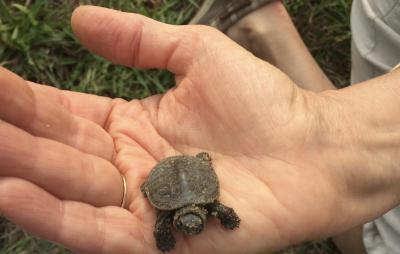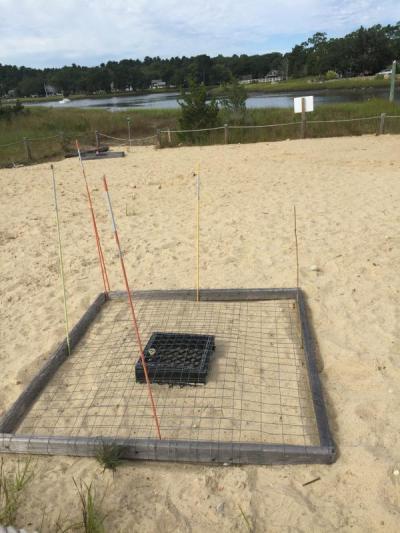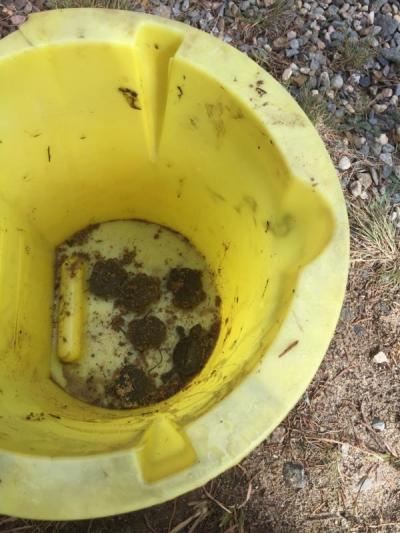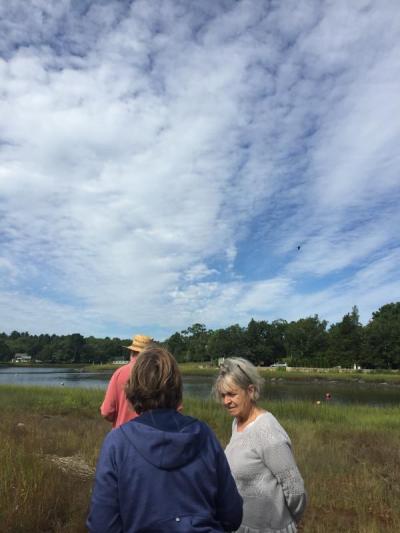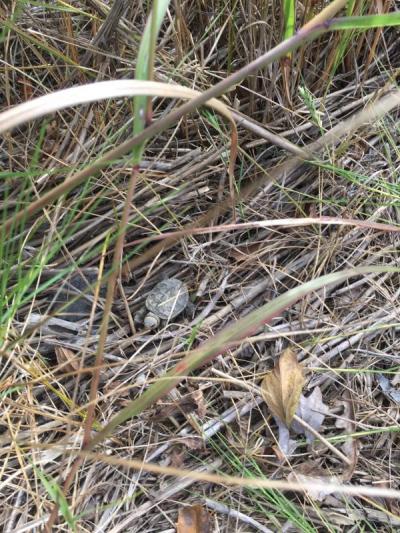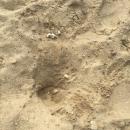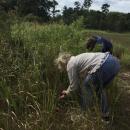[Photos]: Turtles get a helping hand while hatching
MARION — A group of Marion residents has been working for months to see threatened baby and mama turtles through the egg laying and hatching process.
Their intensive volunteer effort focuses on diamondback terrapins, which are named for the diamond pattern on the top and bottom of their shells. The species used to be a dinnerplate delicacy and was hunted almost to extinction.
Don Lewis and Sue Weiber Nourse started the turtle conservation efforts some years ago and Landis Major and Deb Ewing have continued the efforts after they moved.
The group built a turtle conservation area in 2015. The sandy area attracts some of the turtles as they come out of the water to lay eggs, but volunteers also work to identify nests laid outside that area and move some of the nests that they find in other spots.
A meadow attached to the sandy “turtle garden” also serves as nesting habitat for box turtles.
“We’re learning as time goes on,” said Ewing. She said that as she’s tracked nests she’s learned how to tell whether eggs are viable or not. When they are laid, terrapin eggs are pink, but they should turn white over time. If a nest is dug up and the eggs are pink and dented they will not hatch.
The group is still working on solutions to predators such as foxes, which will dig under the chicken wire they use to protect nests. But Ewing says she has also learned that more unexpected threats include underground insects that can get to nests, or fast-growing plant roots.
The group has protected 30 or 40 nests this year, so many that it ran out of wire and had to use milk crates for a few nests.
Ewing, Major and their volunteers currently work with the New England Coastal Wildlife Alliance. They are also trying to form a partnership with Mass Audubon as well.




